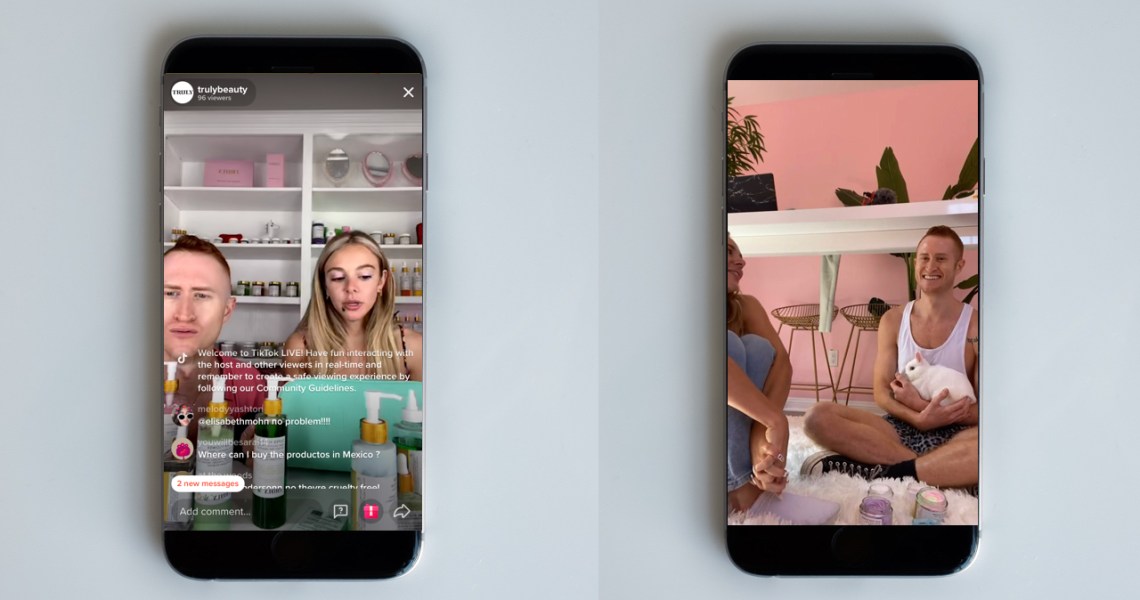By Julian Cannon. This story was originally published in Digiday, our sibling publication.
Truly, a direct-to-consumer skin-care brand created in 2019, has invested in TikTok to increase brand awareness among its target consumers, Gen Z and millennials, who are spending more and more time on the app.
After seeing its products featured on the viral hashtag #TikTokMadeMeBuyIt on TikTok in 2021, Truly decided to use the hashtag as a part of its TikTok marketing strategy to generate more traffic to the brand’s TikTok page.
TikTok is all about viral-ability, and Truly’s products are defined as “viral skin care,” in which the aesthetic — bright colored products with swirls, tantalizing scrubs and unique acne patches — can easily attract its target audience, according to the brand. The platform can back that up: most of its users are ages 18 to 34, according to TikTok.
“We like to take advantage of this hashtag because we know that this viral social channel can do wonders for your brand,” said Tyler Moore, social media manager at Truly.
As skin care has evolved beyond just a grooming act, millennials and Gen Z are segmented based on their skin concerns which include visible pores, acne, dark spots or blackheads and the brand markets according to their interests. “We make products that deal head-on with these skin concerns, and we don’t shy away from speaking about people’s bodies in a very real way,” said Moore.
Instead of relying on social media influencers, Truly uses real people in its TikTok videos with trends like ASMR (autonomous sensory meridian response) content to stand out. All content is made by Truly’s in-house marketing team. “We’ve found that driving wide-reaching viral content that resonates with customers is only possible when you control the creative process and the key elements to make a creative piece popular,” said Moore.
Customers are invited to participate in the brand’s social communities on TikTok and Instagram, where they can share their real feedback about their experiences with the brand and products they have acquired from Truly. The company ensures all comments are always visible in an effort of transparency.
Between 2020 to 2021, Truly accumulated one million followers on TikTok. In that time frame, TikTok’s video upload limit increased from fifteen seconds to one minute. To capitalize on this, Truly started to produce long-form videos promoting products through skits and routine videos.
“At Truly, we stress the importance of content — so having a longer video helps us be more flexible with our content creation,” said Moore.
It is unclear how much of Truly’s advertising budget is allocated to its marketing strategies, as Moore would not share overall budget specifics. However, according to Moore, 100% of the ad budget is for digital; 90% of which is allocated to paid social and paid search such as Facebook, TikTok, and Google as they lean on an organic approach. “We have a heavy focus on driving organic traffic through our videos, which are very low cost to produce,” said Moore. There is no ad spend data found on Pathmatics and Kantar.
There are other brands in the DTC world that are reaching younger generations by targeting them on social channels where they spend the most time. Deux and Sourse are two of the most recent brands that have taken to social media to reach the demographic.
Rob Jewell, chief growth officer at Power Digital, a tech-enabled growth marketing firm chimed in as he believes that Truly’s approach to putting real people behind content that viewers can relate to is effective. “Truly has developed a smart marketing strategy through a hype-house type model where they have a dedicated approach to building and testing creative through trends like ASMR which is appealing for consumers to watch,” said Jewell. “It almost feels like you are experiencing the moment yourself.”
Alexa Kilroy, head of brand at the software development platform Triple Whale, echoed that sentiment: “It’s no surprise that Truly has seen tremendous growth on TikTok. The combination of their ‘spicy’ product names and in addition to the vibrant colors and unique textures of their products make for exactly the type of content that thrives on the platform, particularly with the Gen Z market.”




